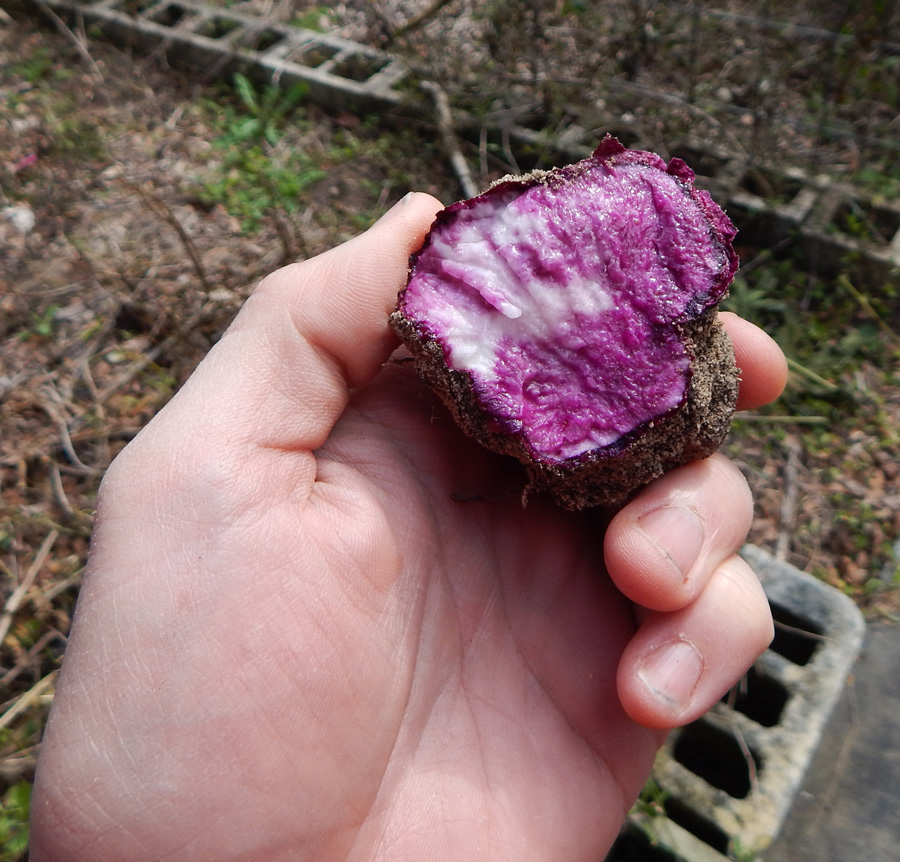We would like to grow a lot more purple ube yam in the New Year, yet getting enough seed material is difficult.
Usually, ube is propagated by cutting an existing yam into chunks about the size of a tennis ball. This means you only get about 6-8 plants per tuber.
It can also be propagated by planting aerial bulbils, though those are not usually produced in quantity.
In our experience, purple ube is less vigorous than the wilder white form of the species, with smaller roots and many less bulbils per plant.
Being able to propagate it from less material would be quite useful. We’d like to produce at least 1/3 acre of ube yams this year.
John Phillips in the Philippines shared this video with me on the 20th of this month:
He is just using slices of skin to make new plants.
After watching it, I decided to see if I could recreate what he’s doing. I don’t understand Tagalog, but it appears like he simply peels a mature ube yam and then puts the peels in a bag to sprout, leaving it outside and open.
I peeled a couple of small ube yams, then put their peels in a bag and put the bag on top of my fridge in the house where it’s warm.
I also took some other peels and dusted them with ashes, like we produce our normal yam minisetts, and planted them in tray of potting soil.
The peels on top of the fridge are molding over already, which is what I expected. I feel like the video is missing something. If you speak Tagalog, please let me know what I’m doing wrong – or if the video is bogus.
It’s possible for peels to grow, as you can see in this video:
However, I have my doubts that skin from dormant tubers can just be thrown in a bag to sprout.
We’ll keep experimenting and let you know if anything works. I have some expensive ube tubers ($5 per lb) from a Vietnamese market we’re trying various methods with.
Hopefully we won’t burn through them all without success!
Finally, today is the 5th day of Christmas, in which we remember the martyrdom of the Holy Innocents.


1 comment
To me it looks like he may have had some soil or bark in the bag with them. Maybe trying it with a thin layer of peat moss would work.
I assume his conditions were very warm and humid also, I would try it in a shaded spot of the greenhouse maybe even on a heat mat.
Comments are closed.